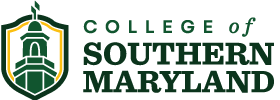Writing Guidelines
Writing for Printed Materials
Preparing Copy for Promotions
Plan your needs well in advance. The design and print process begins with final copy, so be sure your team has discussed, reviewed, edited, and approved the material prior to submitting your marketing request.
Be sure when writing copy that you are following The Associated Press (AP) Style Manual as a basic style guide. In certain instances, CSM has language specific to the institution, which should be used and is contained in the CSM Writing Style Guide.
CSM Hawks Hints: 10 Tips to Writing
- Refer to the AP handbook.
- Refer to the CSM Writing Style Guide.
- Ask yourself who, what, when, where, why, and how when writing content.
- Review your text by reading it aloud slowly. Often, printing a hard copy helps when reviewing text.
- Use a spelling and grammar checker, but do not depend on these tools!
- Have others from your area read text for accuracy and content.
- Respect copyright laws and fair use.
- Double check names, numbers, dates, times, and locations.
- Allow time. Let material sit overnight and edit with fresh eyes the next day.
- Attend training regularly to keep writing, editing, and communication skills honed.
- Be sure that text is approved through the appropriate personnel prior to publication or submission.
Writing Guidelines for e-Communication
Follow standard English rules for grammar, punctuation, and sentence construction.
Be Original
- Do not "re-purpose" documents and materials. Create original content for online.
- Content should be new and valuable.
- Format online materials in MLA format.
When is a rule not a rule?
- Submissions to newspapers with online editions which use AP Style.
- Submissions to peer journals using a specific style, such as the American Psychological Association (APA) style.
- When using material from other sources respect copyright laws and cite sources.
Keep it Short and Simple (K.I.S.S.)
- Paragraphs and messages should be concise and contain accurate information.
- Simplify the way you present your content but do not drop key words such as articles ("the," "an," etc.) or fail to define terminology or acronyms.
- Use Universal Resource Locators (i.e. URLs) to direct people to information rather than
attaching files which may be corrupt, too large, or in the wrong format for users.
Know your Medium
- Print content is linear, formal, and time specific.
- Online content uses informal, clipped language, is non-linear, and encourages interaction with the reader.
Think Graphic
- Layout, design, and fonts should engage the reader.
- Use white space, visuals, and diagrams to clarify meaning.
- Choose quality over quantity in words and graphics.
- Utilize headlines, subheads, cut lines, labels, and headers (a.k.a. your meta-content) to capture readers who scan materials.
- Subject lines and titles should be meaningful and spark interest.
- Avoid HTML litter. It is best to stick with a logo and text.
Be Real
- Is your message relevant, objective, entertaining, and credible?
- Provide concrete facts, examples, visual materials, and stories to make a point rather than expressing opinion.
- What are your three key messages about your program, etc?
- How are those messages addressed in your writing?
Representation and Identity
- Unless you are officially authorized to do so, your electronic communications should not be used to give the impression that you represent the opinion or beliefs of the college.
- You may not employ a false identity directly or through implication. An exception is made when an employee uses a supervisor’s identity to transact business on behalf of the supervisor and the college.
Personal Offenses
- Know, respect, and adhere to the differences regarding personal and business communications.
- Posting that you are registering students = business; Posting that a registrant is "hot" = personal, inappropriate, and possibly illegal.
- Follow employee handbook guidelines regarding political, social, and fundraising efforts on campus.
- Do not post irrelevant comments, reply all, or send junk mail/spam - which includes sending multiple, non-work related attachments.
Know your Audience
- What is the goal?
- Who is the user?
- How does your audience want to be addressed?
- How do you invite them to collaborate, participate in, and contribute content?
- Consider generating material for several different audiences/campaigns.
- Sparingly send valuable links such as stories, websites, etc. that your audience/reader may be interested in.
- Edit and review messages before they are sent.
- Avoid the use of all upper-case letters which is the equivalent to verbally shouting.

